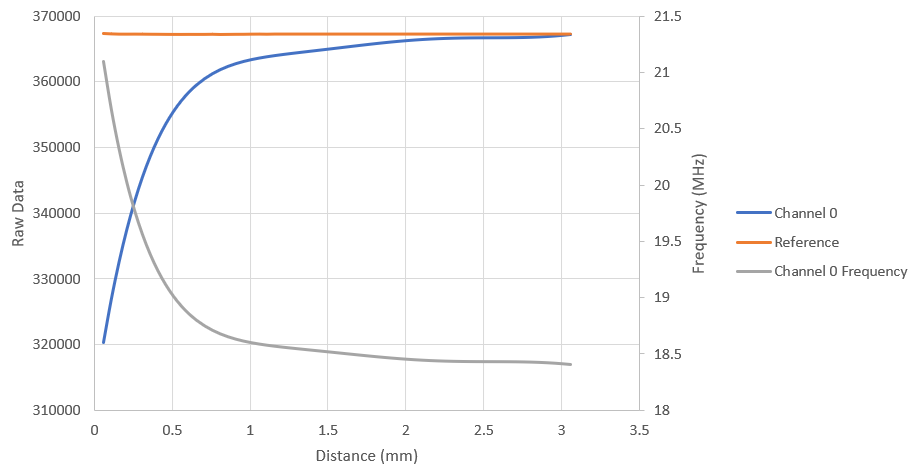SNOAA76 August 2021 LDC3114 , LDC3114-Q1
4.1 Measured Response of LDCCOILEVM Sensor N
Different applications may require sensors other than what is included with the LDC3114EVM. For precise monitoring of short target distances, a smaller diameter sensor coil can be used.
The LDCCOILEVM includes 19 unique PCB coils that can be broken off and used as remote sensors with any TI inductive sensing device. Additional proximity testing was done using the LDC3114EVM with the 3-mm Sensor N from the LDCCOILEVM. Sensor N has the following physical properties:
- Outer diameter: 3 mm
- Number of turns (per layer): 3
- Number of layers: 4
- Trace spacing: 4 mil
- Trace width: 4 mil
The total calculated inductance of this sensor is 0.182 μH with no target present. As Figure 4-2 shows, the average raw data across distance for Sensor N increases steadily until leveling off with the reference coil. Starting from the closest target distance to approximately 0.6 mm the sensor response is the greatest. This relatively simple prototype helps determine the sensor combination that maximizes the desired inductive response for a given application.
 Figure 4-2 Measured Raw Data of LDC3114 With
Sensor N
Figure 4-2 Measured Raw Data of LDC3114 With
Sensor NSensor N has a smaller diameter than the LDC3114EVM sensor coil, reducing the effective sensing distance as discussed in Section 2.2. The target movements were in increments of 0.05 mm to capture the entire sensor response. As the target distance approaches the diameter of Sensor N, the frequency and raw data responses show minimal changes between target positions. A higher frequency sensor, such as Sensor N, is a good choice for applications that require high resolution at small distances.